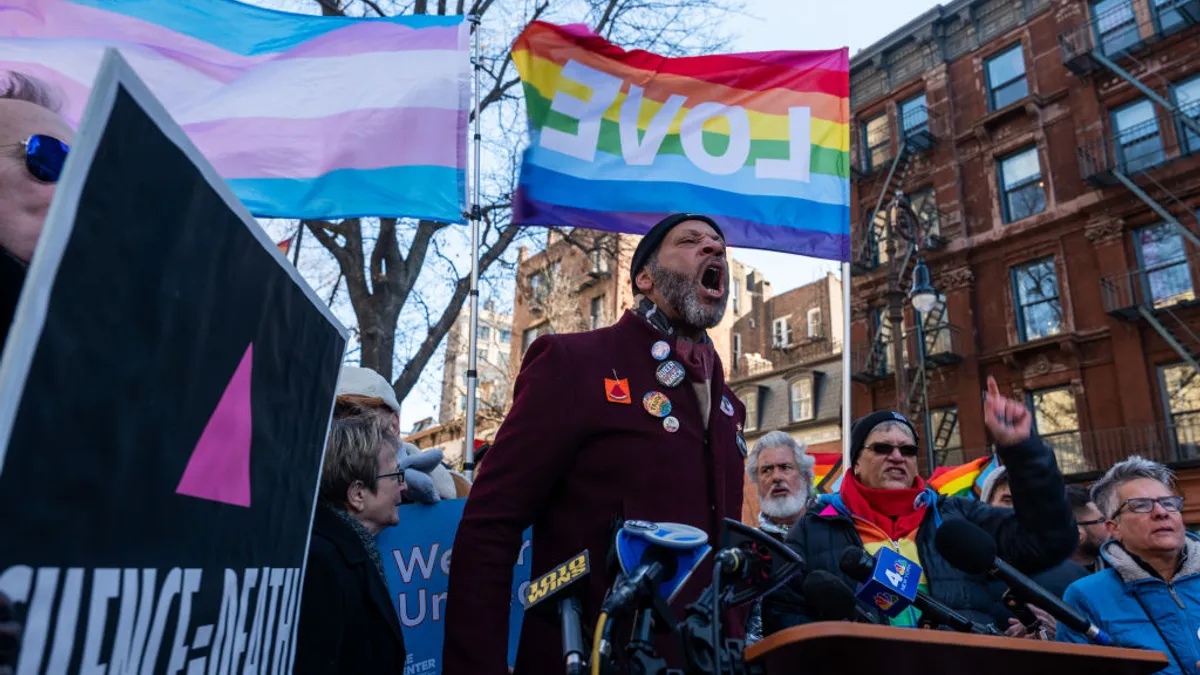Teresa Hopke is CEO for the Americas of Talking Talent. Views are the author's own.
Here's a rhetorical yet critical question about diversity: Are we going to talk about it or be about it?
To quote Akilah Cadet, founder of Change Cadet: "It's okay to truly not realize just how systemic and institutional racism has been holding down Black people for centuries, but now that you do know, how are you going to fix it?"
Damage has been done from generations of shutting out women, BIPOC (Black, Indigenous, and People of Color) and those who identify as LGBTQ from career opportunities and advancement. To begin to amend that, it will take more than workshops, social posts and roundtables. It will require more than a few new hires of a different race. It will take people-centered approaches that can be both seen and felt within an organization. That is the distinguishing factor between talking about diversity and being about diversity.
Unfortunately, some companies are investing in diversity with the wrong motives. Their plans are tied to a need for compliance and pressure from stakeholders; in other cases, it's all just public performance. But diversity must be rooted in empathy in order to drive transformational behavior and culture change within an organization, both individually and companywide.
Here are four ways to start being about diversity.
1. Be rooted in empathy.
Brené Brown has said that "Empathy doesn't require that we have the exact same experiences as the person sharing their story with us ... empathy is connecting with the emotion that someone is experiencing, not the event or the circumstance."
We are in a time where DEI is trending. Companies are creating services and supports to help develop a more inclusive workplace culture. Yet, if there is no work being done to identify underrepresented employees' unique experiences within the company, then there will be a disconnect with those new programs.
Empathy leads us to push past our own ideas about what should happen and helps to unveil for us the barriers to the sense of belonging that we want to develop. So, the source of inspiration for how diversity programs could be better designed, and how success might be defined for them, begins with setting empathetic intentions.
2. Normalize difficult conversations.
All levels of leadership are going to have to get comfortable with being uncomfortable, especially in talking through issues that feel difficult because they've been historically disregarded. Demonstrating a willingness to listen and understand is crucial to creating a greater sense of belonging in the work community.
"When you’re having these conversations, it might seem like we're talking about specific issues, but what we're really talking about is who we are and our perspective on what the world should be. Then we're comparing what the world should be and what it is," Kwame Christian, founder of the American Negotiation Institute, once said.
Even though many of our meetings are happening virtually now, we should still have these kinds of conversations. Emails, texts and even phone conversations can leave too much room for further misunderstanding. Being open to face-to-face talks, especially when diversity, equity and inclusion is in question, shows courage and curiosity that can lead to change.
3. It's all hands on deck.
Remember Crystal Pepsi? Long story short, it's considered one of the most extensive product failures of all time. The marketing plan for it was brilliant. The team said all the right things meant to entice young Gen Xers to try it. Well, they tried it and never tried it again. The packaging was the only thing impressive about it.
Here's what this has to do with what we're all endeavoring to do in the diversity space: It's not enough to have a great deck on diversity to present to the team if underrepresented voices are not also informing the work.
We sometimes assume that our limited perspectives represent what employees, clients and stakeholders need. That way of thinking, especially without having input from people at different levels and backgrounds within the organization, can lead to poor decision-making. Unfortunately, that is exactly what is happening with some diversity plans. It's a Crystal Pepsi situation. It looks and sounds great and took a lot of effort and resources to develop, but it's already going flat.
4. Be a proactive ally who shuts down microaggressions.
When Erika started her new role as a VP at a prominent south Florida real-estate firm, she excitedly attended a socially-distanced welcome mixer to meet her new team and network. But while she was there, she was asked on more than one occasion if she was the new assistant to one of her direct reports. The first time she didn't respond, and neither did the people around who heard it.
Microaggressions are a common threat to the well-being of women and people of color in the workplace. When left unchecked, they can erode employee engagement and break trust. Proactive allies can intervene by using their position or privilege to address colleagues who are being reckless with their words.
People matter more than products. People matter more than programs. And people know the difference when neither is the case. Keeping this in mind with diversity work can help an organization to gauge whether or not it's been just talking about it or if it's actually being about it.





















